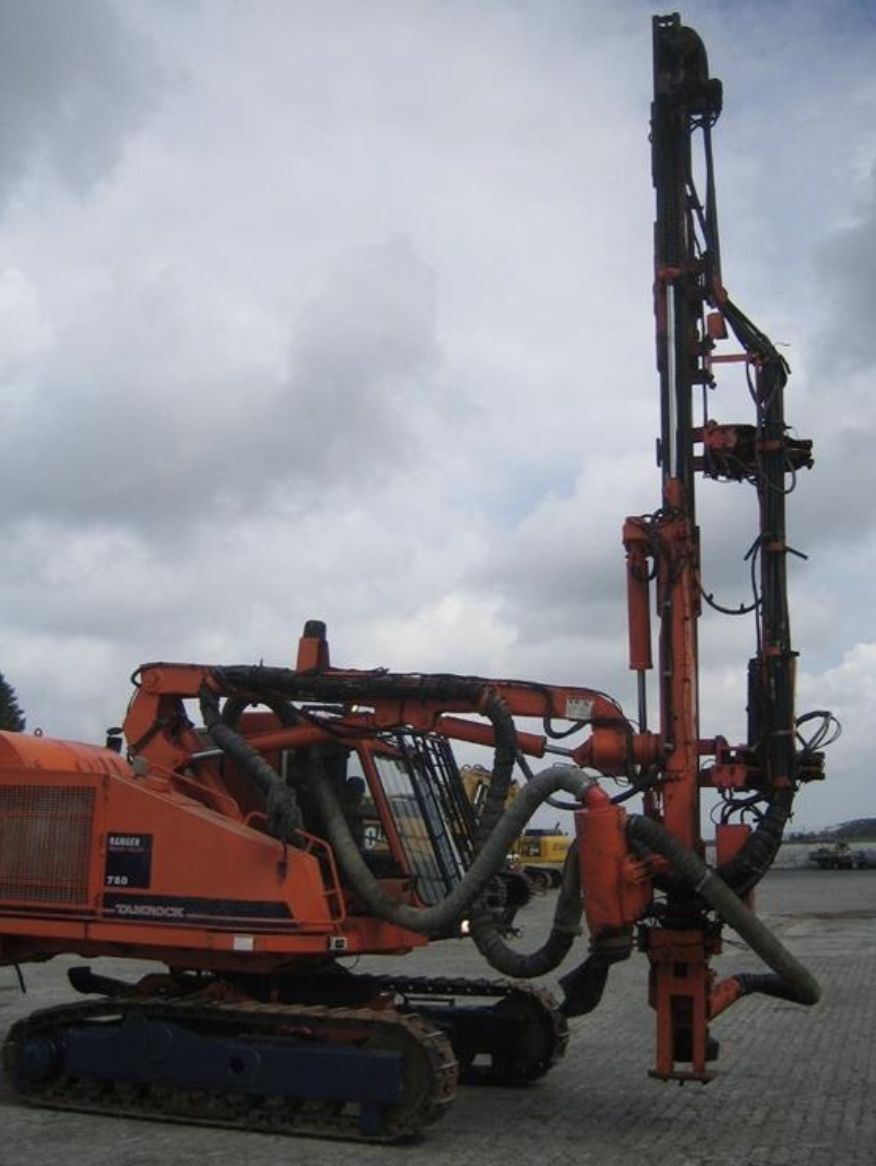Top hammer drilling rigs and down-the-hole drilling rigs are two common drilling equipment, and their main differences lie in their working principles and application scenarios.
Working Standards:
Top hammer drilling rig: The top hammer drilling rig transmits the impact force to the drill pipe and drill bit through the top hammer device, so as to drill in ore rock or soil. Under the action of the impact force, the drill rod and drill bit of the tophammer drill achieve the drilling target in a rapid impact and rotation manner. Tophammer drills are suitable for harder rock and soil.
Down-the-hole drilling rigs: Down-the-hole drilling rigs use high-pressure air or hydraulically powered drill bits to drill directly into the ground. The drill bit of the down-the-hole drilling machine can be directly rotated underground to achieve the purpose of drilling. Down-the-hole drilling rigs are suitable for all types of geological conditions, including soft soils, gravel and rock.
Application scenario:
Tophammer Drilling Rigs: Tophammer drilling rigs are suitable for exploration, construction and tunneling in all types of rock. It can drill smaller diameter holes and is more suitable for working in harder geological environments.
Down-the-hole drilling rigs: down-the-hole drilling rigs are suitable for mines, oil wells, gas wells, water wells and other fields. It can drill larger diameter holes and work more efficiently at greater depths. To sum up, there are obvious differences in working principles and application scenarios between tophammer drilling rigs and down-the-hole drilling rigs.
The tophammer drilling rig is a common drilling equipment, which is suitable for various construction, tunnel and exploration projects. The working principle of the top hammer drilling rig is to transmit the impact force to the drill pipe and the drill bit through the top hammer device, so as to drill in the ore rock or soil. Under the action of the impact force, the drill rod and drill bit of the tophammer drill achieve the drilling target in a rapid impact and rotation manner.
A tophammer drill is suitable for harder rock and soil because the impact force can effectively penetrate and break up tough formations. This type of drilling equipment usually has a smaller hole size, so it is useful in projects that require a smaller hole size.
Tophammer drills are capable of drilling deeper holes at higher speeds. Widely used in deep foundation pit support, tunnel construction, rock exploration on construction sites and other fields. Down-the-hole drilling rigs, another common type of drilling equipment, use high-pressure air or hydraulically powered drill bits to drill directly into the ground.
The working principle of the down-the-hole drilling rig is to achieve the drilling target by rotating the drill bit underground. Down-the-hole drilling rigs are suitable for all types of geological conditions, including soft soils, gravel and rock. The down-the-hole drilling rig can drill larger diameter holes, which is suitable for some projects that require larger diameters. With strong penetrating power, it can efficiently drill holes in various underground projects.
Down-the-hole drilling rigs are widely used in mines, oil, natural gas, water wells and other fields because they can operate at greater depths. Whether it is a top hammer drilling rig or a down-the-hole drilling rig, the specific requirements, geological conditions and needs of the project need to be considered when choosing to use it. Both types of drilling equipment have their advantages and disadvantages, and are suitable for different projects and materials. Choosing the right drilling equipment can improve work efficiency, reduce costs and ensure engineering quality.
Choosing the right drilling equipment depends on factors such as drilling objectives, geological conditions, and drilling requirements.
Post time: Aug-08-2023








